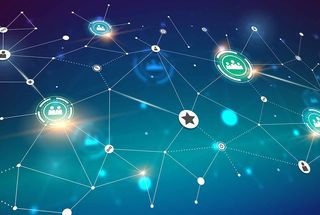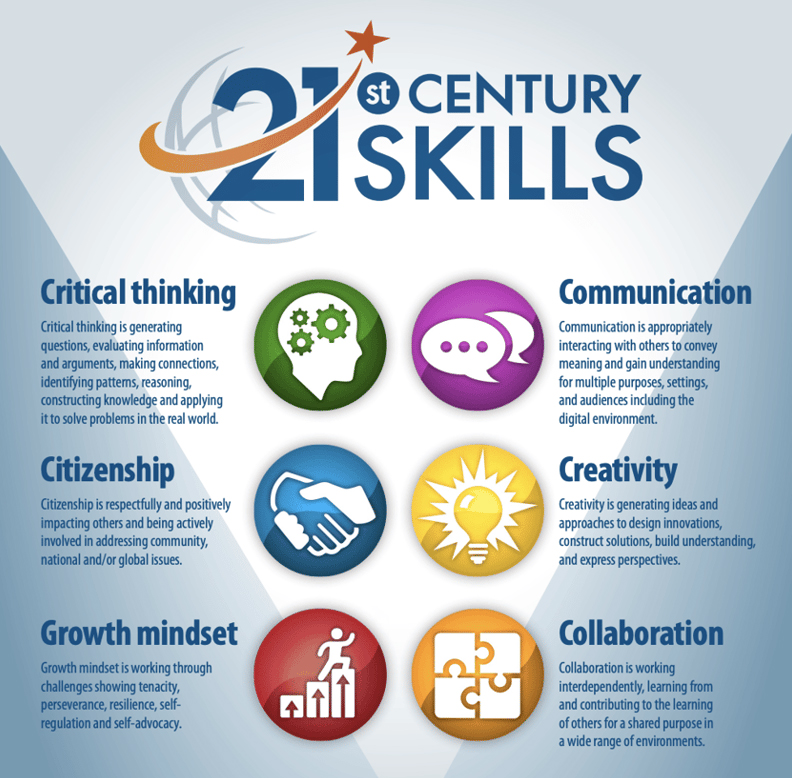Building ecosystems: An answer to 21st century education 4.0

"Ecosystems are a group of interconnected and diverse actors, that complement each other and create added value" (John C. Moore, 1993). In the context of higher education, adopting an ecosystem framework can help expand the learning experience so that opportunities flourish and new, collaborative solutions are generated to respond to today's changing environments. By building ecosystems, the diverse participants increase their resources and disciplines thereby creating a greater pool of solutions, offers and innovation.
Ecosystem framework
Over the last few years, there has been an increasing interest in ecosystems within the business and educational worlds. An ecosystem encompasses groups of organizations and individuals that interact and rely on each other’s activities. Although the multiplication of actors may turn out to be challenging to coordinate, the "collaborative arrangements through which firms combine their offerings” increase the range of customer-facing solutions (Ander, 2008).
Indeed, according to De Meyer (2020), ecosystems contribute in three main ways. Firstly, they promote joint learning and innovation. By gathering many actors with diverse competencies and know-how, ecosystems unlock innovation in a much faster way than any organization would do alone. Secondly, they tap into new sources of value. As the range of capabilities and experience is multiplied, new opportunities flourish and new solutions are generated to respond to a changing environment. Finally, it brings agility and flexibility, enabling partners of the ecosystem to adjust to changing circumstances.
A good example of business ecosystem is Netflix. It orchestrates different coopetitors through its platforms, delivering streaming through Microsoft’s, and using Amazon’s cloud services to extend the range of devices that could stream videos through web browsers, consoles and other devices. Although Amazon is a direct competitor, Netflix significantly reduces its cost by using Amazon services and extend its visibility using Microsoft.
An example of an effective educative ecosystem that enables innovation is Helsinki EdTech Incubator sponsored by the Finish government. It gathers businesses, students, academics and EdTech experts to grow innovative ideas into valuable, scalable, and international business concepts.
The VUCA environment
Volatility, Uncertainty, Complexity and Ambiguity (VUCA) is an acronym that sums up the challenges of a rapidly evolving business environment - also known as 'the VUCA environment'. Although this concept originated after the Cold War, in the past decades it has regained relevance. The VUCA environment has reshaped industry and business dynamics, which calls for an adjustment of skillsets to successfully navigate this changing environment.
Industrial Revolutions 1.0 and 2.0 were characterized by the rise of electric power, mechanization and mass production. Successful leaders required static and technical expertise, personal strength, vision and an organizational focus .
Industry 3.0 marked by automation and IT systems, had a dramatic impact on access to information and communication. While the open access to information made knowledge a key resource for innovation and economic systems; it has also been a source of disruption in the environment, as information went viral and became uncontrollable. By then, the complexity of the environment required different skills, understanding knowledge in its context, taking into consideration variables and adapting it to the situation. As a result, it was required to move from acquiring knowledge in a static and codified environment to the ability to develop knowledge from multiple sources of information.
Adjustment of workers’ skillsets
Today, in the middle of Industry 4.0, elements such as robotization, big data analytics, AI and IoT disrupt human activities. Human-machine collaboration demands current systems to be reimagined and redesigned leaving aside the constraints of the environment and moving to a higher level of abstraction. This new paradigm calls for an adjustment of workers’ skillsets (Sfreddo & Borrelly, 2020).
On the one hand, soft skills such as higher-order critical, creative, innovative thinking, collective intelligence, as well as emotional intelligence (WEF, 2019) are required to adopt new perspectives and collectively rethink activities. On the other hand, technical competencies such as developers’ skills, AI’s limits and potential and digitalization are necessary to generate new systems.
Finally, tomorrow’s Industry 5.0, reflects a shift from a focus on economic value to a focus on societal value, and a shift in focus from welfare to wellbeing. According to the European Union, Industry 5.0 aims beyond efficiency and productivity to reinforce the role and contribution to society by “specifically putting research and innovation at the service of the transition to a sustainable, human-centric and resilient industry” (Industry 5.0 roundtable, 2022).
The education and training of a country’s workforce is a major factor in determining how well the country’s economy will perform. While economic and business dynamics are shaped by their environment, which is more than ever: constantly changing (Volatile), with decreasing predictability (Uncertain), with multiple problems and effects harder to understand (Complex) and with no one-size-fits-all practice (Ambiguous); educational experts agree that education should prepare students to adapt as quickly as these changes occur.
According to OECD (2019), growing students’ confidence in their own skills to be able to learn efficiently in such an environment is key to adapting to, thriving in and even shaping whatever the future holds. “Students need support in developing not only knowledge and skills but also attitudes and values, which can guide them towards ethical and responsible actions”.
21st-century skills and higher education
While education’s past focus was to teach factual and procedural knowledge, today’s education focus shifts towards the development of conceptual, and metacognitive knowledge so that individuals can successfully create, share, and collaboratively develop new knowledge practices in complex environments. To prepare students efficiently, OECD developed a set of skills and competencies named the 21st-century skills. It includes critical skills, closely connected to adaptability, knowledge construction, finding, organizing, making sense of information, and critical thinking. Skills that also encompass entrepreneurship, global awareness, innovation, creativity, collaboration, communication and problem-solving.
Yet, acquiring such skills demands an effective learning environments. There is an immense difference between learning about physics and learning to be a physician, which makes learning becomes as much social as cognitive, as much concrete as abstract, and becomes intertwined with judgment and exploration, just the way we learn in the workplace. To allow students to raise from the “knowing” to the “understanding”, the learning environment and knowledge practices demand to be engaging and guided by the principles of learning in context, learning by doing, and experienced-based learning. Therefore, universities should not limit their focus on what are the important skills and competencies for the 21st century but also on where and how to acquire these competencies.
Moreover, to prepare students for Industry 5.0, solving present and future challenges exceed the capacity of individual cognition, knowledge in a unique field, or resources of a single organization. Indeed, it demands institutions to adopt a transversal approach, and implement collaborative learning and socio-constructivism with a range of stakeholders with different know-how. Therefore, universities could also consider relevant partners with whom the knowledge is co-constructed.
Adopting a position that questions the how, where and with whom implies questioning the current learning environment offered by most universities. Acquiring 21st-century skills has profound implications for institutions active in higher education that need to adapt their curricula, practices and learning context.
Yet, although competencies and skills are evolving, teaching and knowledge practices remain the same. Redecker and colleagues (2011) urge that education and training need to react more effectively and promptly to changing societal trends and, better address and narrow the current gap between education and the world of work. Others (i.e. William, 2019) even question the universities’ current model and functioning.
Ecosystem-based universities: A win-win approach
To close the skills gap for the coming generation, enabling reskilling, upskilling, life-long learning and co-construct knowledge requires teachers to enhance connectivity across schools and school systems. In fact, the 21st-century competencies will be incrementally acquired beyond the educational sphere, involving other arenas of society.
Adopting an ecosystem strategy allows to bridge previous established boundaries, and unlocks a win-win approach for all partners. Firstly, knowledge is co-constructed amongst students, academics, industry experts and “real-life” partners, allowing universities to add a wild range of skills and competencies to their curricula without building them on their own. Secondly, the practices and learning happen beyond the university walls in interaction with external partners; students have access to authentic learning, situated and in context, which prepares them for working life.
Last but not least, while learning experiences are multiplied, new opportunities flourish and new solutions are generated to respond to a changing environment (Meyer, 2020; Quin et al., 1998) and to potentially contribute to industries, government and society and respond to the requirements of Industry 5.0.
Co-construction of knowledge
To conclude, the future success of higher education will not be based on the knowledge created within their walls, but rather on the knowledge co-constructed with a range of partners within their ecosystem. The identification, orchestration and development of competencies will determine how well a university is equipped to give students, and therefore, future workers, the ability to adapt to a constantly evolving landscape of competencies and skills.
EHL is now developing a wild range of short courses, one of them entitled “Hospitality Management for Social Change”, created by Dr. Inès Blal and Claudia Borrelly. The course is built around a tripartite partnership where knowledge is co-constructed with the cooperative "Démarche", EHL students and social entrepreneurs with the view of creating small lodging units with a social purpose.
The aim is twofold, on the one hand, students’ learning happens in a real-life context and is closely accompanied by teachers via whom theoretical frameworks are applied to real-life challenges. On the other hand, local associations can benefit from EHL expertise with the opening of a small lodging unit that brings social impact such as reinsertion and community integration.

